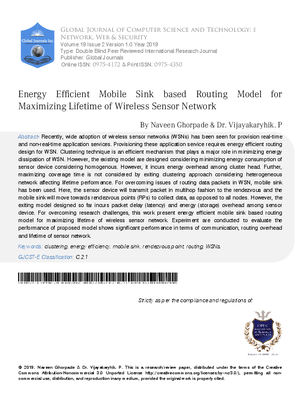Abstract
Recently wide adoption of wireless sensor networks WSNs has been seen for provision real-time and non-real-time application services Provisioning these application service requires energy efficient routing design for WSN Clustering technique is an efficient mechanism that plays a major role in minimizing energy dissipation of WSN However the existing model are designed considering minimizing energy consumption of sensor device considering homogenous However it incurs energy overhead among cluster head Further maximizing coverage time is not considered by exiting clustering approach considering heterogeneous network affecting lifetime performance For overcoming issues of routing data packets in WSN mobile sink has been used Here the sensor device will transmit packet in multihop fashion to the rendezvous and the mobile sink will move towards rendezvous points RPs to collect data as opposed to all nodes However the exiting model designed so far incurs packet delay latency and energy storage overhead among sensor device For overcoming research challenges this work present energy efficient mobile sink based routing model for maximizing lifetime of wireless sensor network Experiment are conducted to evaluate the performance of proposed model shows significant performance in terms of communication routing overhead and lifetime of sensor network
This work is licensed under a Creative Commons Attribution 4.0 International License.
Copyright (c) 2019 Authors and Global Journals Private Limited

